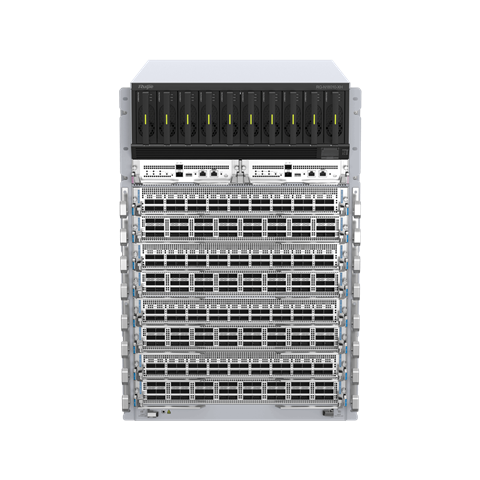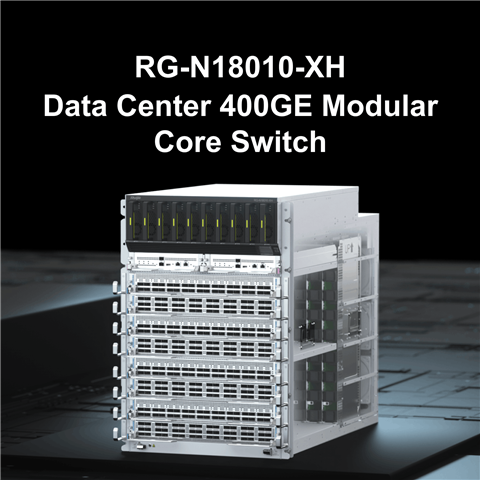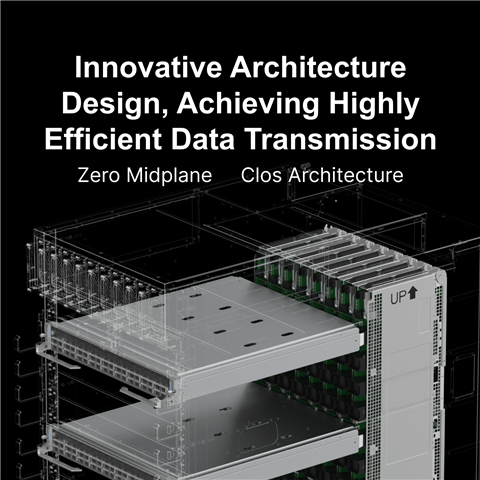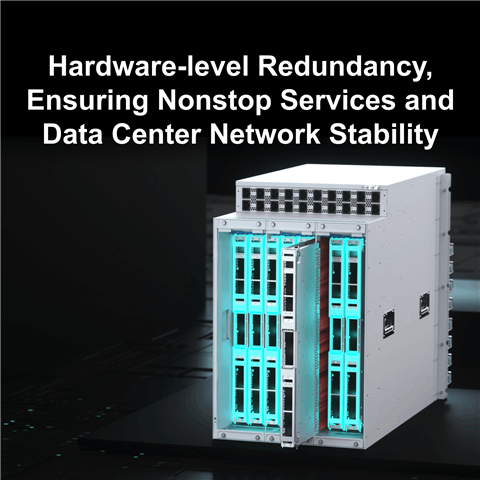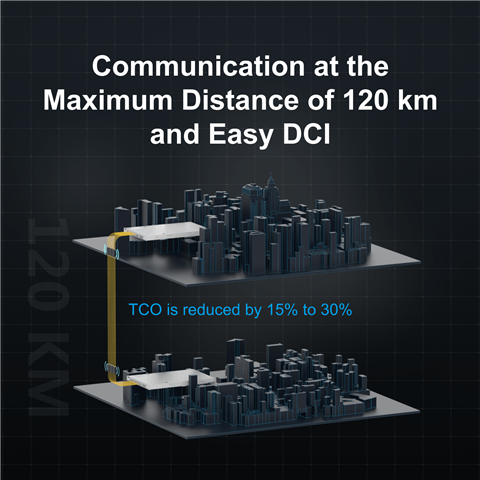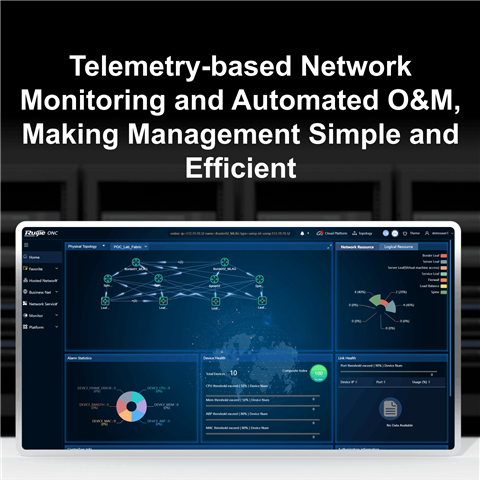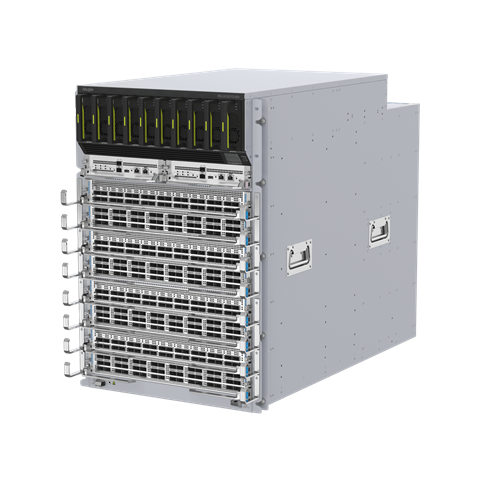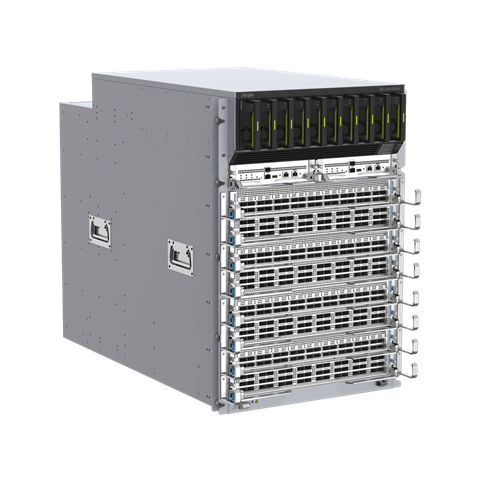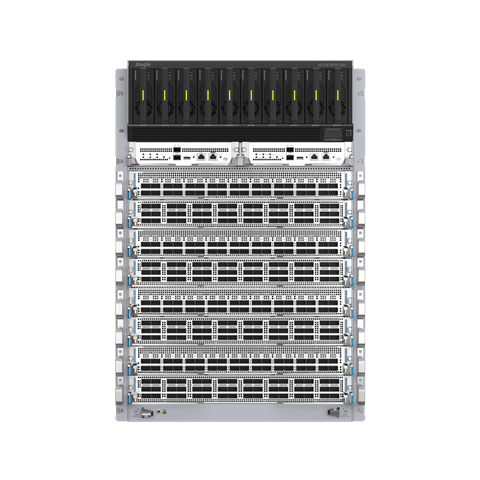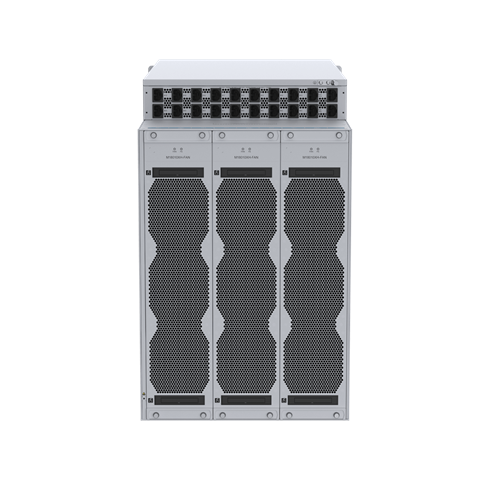Data Center 400GE Modular
Core Switch
RG-N18010-XH
The RG-N18010-XH provides 10 module
slots, including eight service slots, which can
be used with 100GE and 400GE line cards. It
supports 800GE line cards in the future,
easily coping with future bandwidth
expansion needs.
With various port types, the RG-N18010-XH
supports up to 288 x 400GE and 1152 x
100GE line-rate ports, and allows smooth
evolution to 800GE, satisfying requirements
in diversified scenarios of data center
networks.

Innovative Architecture Design,
Achieving Highly Efficient Data Transmission
Zero Midplane
Clos Architecture

Service line cards are directly connected to SFUs, without the use of the midplane. Data can directly reach the SFU, with a
short distance. This significantly reduces the transmission loss and achieves efficient data transmission.
Communication at the Maximum Distance of 120 KM and Easy DCI
400GE ZR/ZR+ optical modules are used for interconnection, reducing Optical Transport Units (OTUs) and helping a cloud or hyper-scale
data center network to adapt to growing high-bandwidth services

Hardware-level Redundancy,
Ensuring Nonstop Services and Data
Center Network Stability
mode, ensuring nonstop services.
fault occurs, services are switched within seconds. Services
are not interrupted when a power module is replaced. The
switch provides different protection measures for links.
fan modules can be intelligently adjusted, ensuring highly
efficient heat dissipation.
the switch.
Innovative Technology Design and Highly Efficient Heat Dissipation

MACsec Data Encryption and Transmission,
Effectively Protecting Service Data Security
MACsec provides hardware-level data encryption. With MACsec and 802.1X configured, the switch can strictly identify and verify transmitted data.
With MACsec, the switch achieves interface-based secure line-rate transmission, effectively preventing data from being intercepted and obtained maliciously
and ensuring service data security.

Telemetry-based Network Monitoring and Automated O&M,
Making Management Simple and Efficient
The switch enabled with telemetry provides clear data status and hierarchy.
The switch uses the push mode to proactively collect and push information and to provide sub-second-level network monitoring in real time,
making network management more efficient and accurate.

